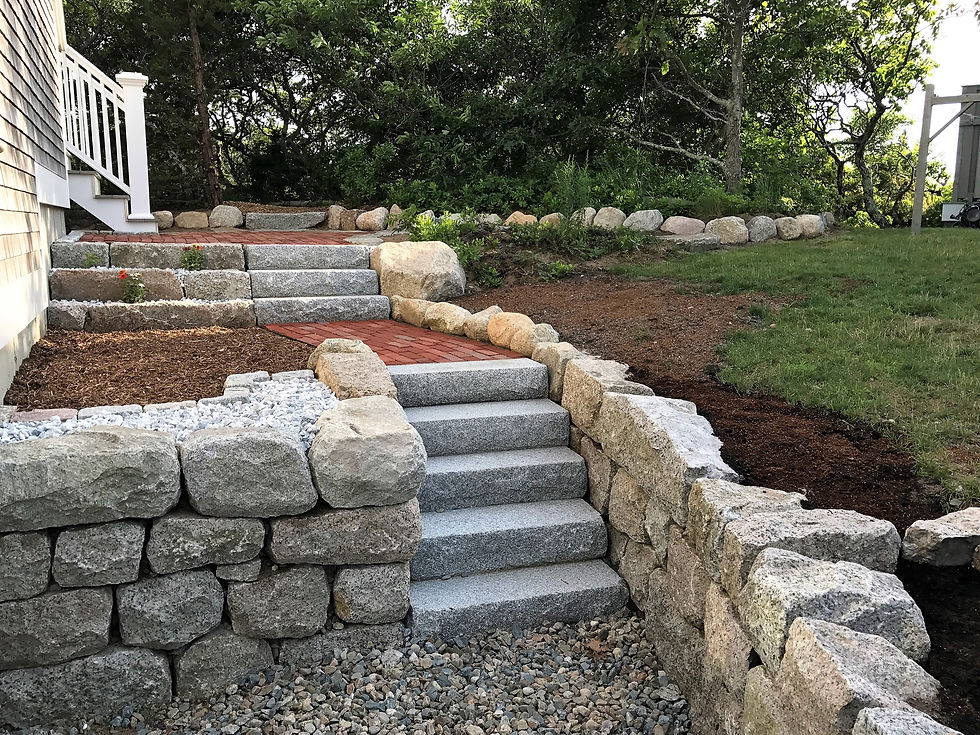Machu Picchu

High in the clouds of modern-day Peru, a magnificent stone city looks over the Urumamba river. Stone walls 100 feet tall and higher have stood, straight as a laser, for over 500 years while neighboring mountainsides slid away during torrential seasonal rains and regular earthquakes registering 7.0 on the Richter scale.

Machu Picchu lies on the steep slope of a saddle shaped geological formation called a "graben" between two peaks which approximate the locations of seismically active fault lines. Around 250 million years ago, a giant magma intrusion stopped shy of the earth's surface and cooled slowly underground to form a giant batholith of fine-grained white granite upon which Machu Picchu now sits, the softer sedimentary rock above having washed away over millions of years. Over time, earthquakes and running water loosened granite boulders that tumbled to the bottom of the canyon carved by the Urumamba. Sometime around 1400 AD, Incan masons hauled these stones up the mountain to build the city of Machu Picchu and it's surrounding agricultural terraces. As far as we know, the Alpaca Llama, capable of pulling just 100 pounds, was the strongest draft animal available (explaining why there is no evidence that Incas used wheels outside of children's toys). Some believe the Incas, masters of plumbing, filled cisterns with water for counterweights to help move stones against gravity. Others have suggested a lock system for which no evidence has surfaced. Safe to say that for several years many weary med laid to rest each night on the slopes of Cerro Machu Picchu.

These determined masons built their structures on deeply laid dry stone foundations that allow the buildings to "dance" in place during earthquakes that have often leveled Spanish architecture in nearby towns. In neighboring Cuzco, earthquakes have toppled newer European construction on top of undisturbed Incan stone foundations. Between foundation stone, deep layers of crushed stone facilitate drainage during intense seasonal rains. Engineers who have inspected the site estimate that the builders spent more than half of their efforts underground. Moreover, complex plumbing systems that still function today channel uphill water into over 100 fountains throughout the city. Excess water overflows during heavy rains into a central canal that drains into the rainforest below. The ultimate result is that, after centuries of near abandonment, the structures stand strong under environmental conditions that would cause landslides and destruction in natural landscapes and modern construction.

The visible stonework, itself, consists mostly of courses of rectangular to roundish faced stone. With the exception of the magnificent lintels (the stones that cross the tops of the windows in the photo below), most of the stone is of a size Cape Cod excavators would call "2-man stone," meaning stone that can be moved by two people. The masons weren't afraid to use the right smaller stone to solve a height disparity and create a bond between two larger stones, but the majority of the stonework consists of solid masonry bonds between hefty blocks of granite.
The granite blocks were carefully worked with hammer stones even harder than granite, such as quartzite. Remember, the Incas lacked steel tools pioneered across the Atlantic by the Hittites three thousand years earlier. According to Inca Quarrying and Stonecutting, by Jean Pierre Protzen, archeological work suggest that most of the stone cutting occurred at the building site to carefully fit the boulders into place in the wall. At Cape Cod Stoneworks, we likewise do must of our stone cutting on site. We use the resulting stone shards as the critical shims and backfill that hold the face stones in place over time.

The idea of fitting stones tighter than the width of a razor blade for your sun temples (left) suddenly makes a heck of a lot more practical sense when you understand the importance of stone shards for drainage underground and for the structure of a stone-built wall. Recall the extraordinary drainage challenges presented by this steep, rainy slope, and the engineers' estimate that half of construction at the site lies underground.
The below image of "the temple of the condor" provides a rare view of the interior of an Inca stone wall (bottom right). The strategic placement and orientation of stones inside a stone wall is an often overlooked but critical component of a stone wall's integrity and longevity.

The standard Machu Picchu Building stone style is our favorite style to emulate. Working carefully selected 2-man fieldstone on site allows us to achieve a beautiful finished product while maintaining a low embodied energy cost and reasonable financial cost to the homeowner. While we don't have Andean rockslides to comb through, you can find us regularly climbing through boulder piles of excavators, loam sifters, and blast sites to find stones with beautiful faces and excellent structural dimensions.



Check back soon for a post on the agricultural terraces pictured in the background of the above photograph. Remarkable structural engineering, a sophisticated irrigation system, and the creation of varied microclimates enabled long-season production of the Incas' favorite crops including corn, beans, potatoes, quinoa, other tubers, and amaranth.
While these walls depend primarily on gravity for structure, many also contain clay mortar, made by mixing of sandy soil, clay, water, and sometimes straw. Just as Chinese masons used sticky rice soup in Lyme mortar for the Great Chinese Walls, the Inca also used an organic ingredient to improve the binding and water-wicking qualities of their mortar. According the director of some Machu Picchu restoration efforts, Dr. Ann Kendall, they used the pulp of San Pedro Cactus, which happens also to be known for its hallucinogenic affects.
sources: http://www.smithsonianmag.com/history/farming-like-the-incas-70263217/?no-ist
http://www.adventurespecialists.org/mpgeology.html
Peru, by Pam Barrett
http://jsah.ucpress.edu/content/44/2/161
http://www.cusichaca.org



















